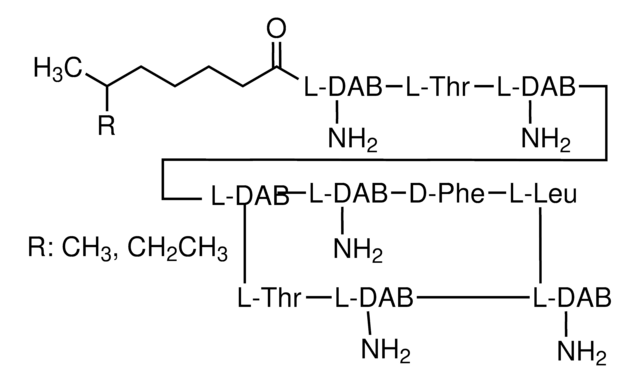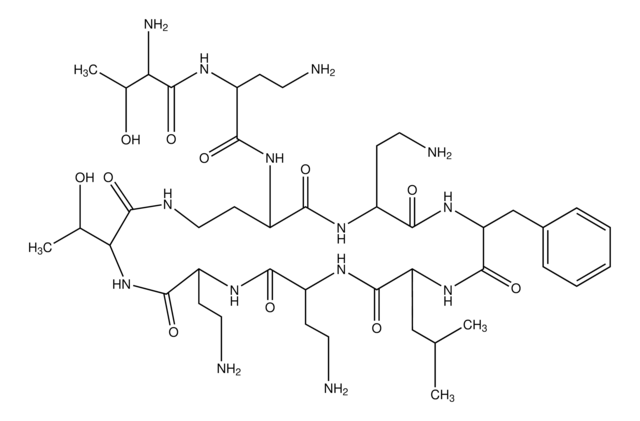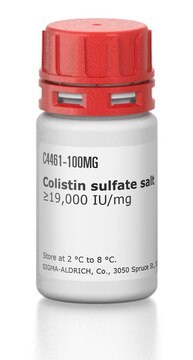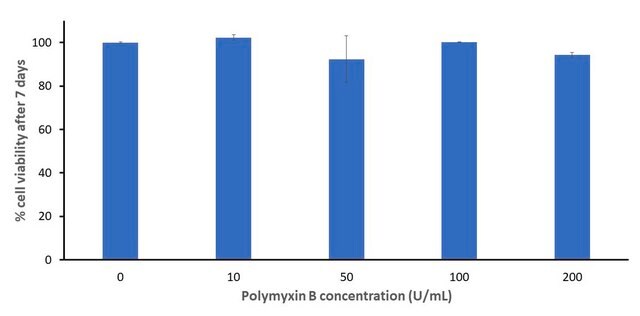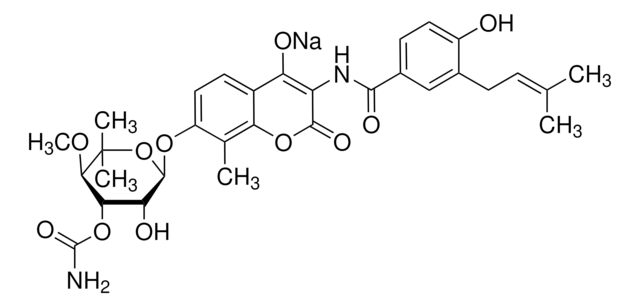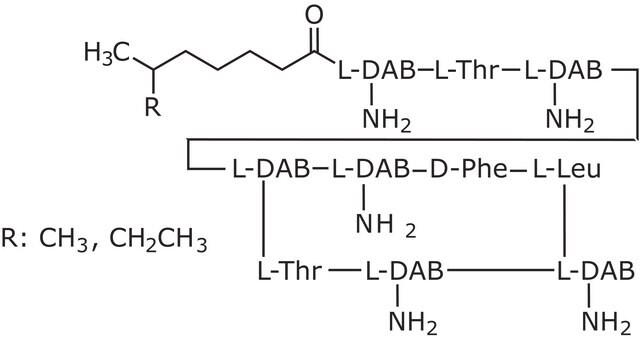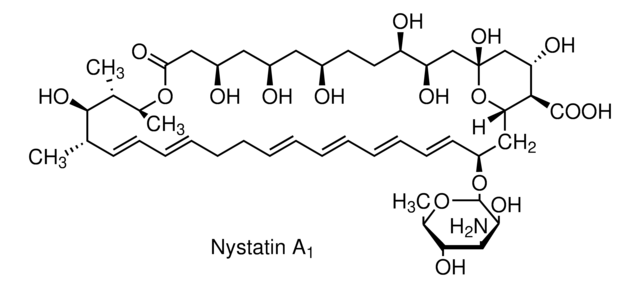Wichtige Dokumente
P4932
Polymyxin B -sulfat (Salz)
powder, non-animal origin, suitable for cell culture, BioReagent
Synonym(e):
Polymixin, Polymixin B, Polymixin B sulfate
About This Item
Empfohlene Produkte
Produktbezeichnung
Polymyxin B -sulfat (Salz), powder, BioReagent, suitable for cell culture
Produktlinie
BioReagent
Qualitätsniveau
Form
powder
Wirksamkeit
≥6,000 USP units per mg
Methode(n)
cell culture | mammalian: suitable
Wirkungsspektrum von Antibiotika
Gram-negative bacteria
Wirkungsweise
cell membrane | interferes
Lagertemp.
2-8°C
SMILES String
O=C(C(NC(C(CCN)NC(CCCCC(C)CC)=O)=O)C(C)O)NC(CCN)C(NC(CCNC(C(NC(C(NC(C(CCN)N1)=O)CCN)=O)C(O)C)=O)C(NC(CCN)C(NC(CC2=CC=CC=C2)C(NC(CC(C)C)C1=O)=O)=O)=O)=O.O=S(O)(O)=O
InChI
1S/C48H82N16O13.H2O4S/c1-27(2)24-37-47(76)59-32(11-19-52)41(70)56-31(10-18-51)43(72)61-35(14-22-65)39(68)54-21-13-34(45(74)57-33(12-20-53)44(73)64-38(48(77)63-37)25-28-6-4-3-5-7-28)60-42(71)30(9-17-50)58-46(75)36(15-23-66)62-40(69)29(8-16-49)55-26-67;1-5(2,3)4/h3-7,26-27,29-38,65-66H,8-25,49-53H2,1-2H3,(H,54,68)(H,55,67)(H,56,70)(H,57,74)(H,58,75)(H,59,76)(H,60,71)(H,61,72)(H,62,69)(H,63,77)(H,64,73);(H2,1,2,3,4)
InChIKey
HNDFYNOVSOOGDU-UHFFFAOYSA-N
Suchen Sie nach ähnlichen Produkten? Aufrufen Leitfaden zum Produktvergleich
Allgemeine Beschreibung
Chemical structure: peptide
Anwendung
- for the treatment of BAC-1.2F5 murine macrophages as an LPS (lipopolysaccharide) inhibitor
- as positive and negative control during microbicidal concentration (MCC) assay
Biochem./physiol. Wirkung
Antimikrobielles Spektrum: Hat eine bakterizide Wirkung auf die meisten gramnegativen Stäbchen††, einschließlich E. coli, sowie auf die meisten Pilze und grampositiven Bakterien.
Vorsicht
Angaben zur Herstellung
Sonstige Hinweise
Signalwort
Warning
H-Sätze
Gefahreneinstufungen
Acute Tox. 4 Oral
Lagerklassenschlüssel
11 - Combustible Solids
WGK
WGK 3
Flammpunkt (°F)
Not applicable
Flammpunkt (°C)
Not applicable
Persönliche Schutzausrüstung
dust mask type N95 (US), Eyeshields, Gloves
Hier finden Sie alle aktuellen Versionen:
Besitzen Sie dieses Produkt bereits?
In der Dokumentenbibliothek finden Sie die Dokumentation zu den Produkten, die Sie kürzlich erworben haben.
Kunden haben sich ebenfalls angesehen
Unser Team von Wissenschaftlern verfügt über Erfahrung in allen Forschungsbereichen einschließlich Life Science, Materialwissenschaften, chemischer Synthese, Chromatographie, Analytik und vielen mehr..
Setzen Sie sich mit dem technischen Dienst in Verbindung.